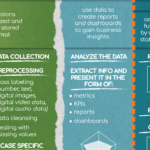Tags Data Money Laundering
Money laundering is a serious global problem, and financial institutions are under increasing pressure from regulators to help put a halt increasingly-sophisticated criminal laundering attempts. One of the primary tools used to combat money laundering is customer risk-rating models. As currently implemented, however, these models are proving inadequate. Now, regulators around the world are encouraging financial institutions to take innovative approaches, and many leading financial institutions are leading the charge into a brave new world of anti-money laundering (AML) measures. Here are 5 of the best practices financial institutions are adopting to improve their AML efforts:
- Simplifying customer risk-rating model architecture – most current AML models are overly complex and not properly tuned for the modern context. Many leading financial institutions are starting to examine their AML programs in a more holistic way.
- Improving data quality – poor data quality is the single biggest contributor to the poor performance of customer risk-rating models. Incorrect know-your-customer (KYC) information, missing information on company suppliers and erroneous business descriptions impair the effectiveness of screening tools and needlessly raise the workload of investigation teams. Machine learning algorithms and natural language processing are helping improve data quality.
- Complementing expert judgment with statistical analysis – financial institutions have traditionally relied on experts and regulatory guidance to identify and weigh the inputs used in risk-rating-score models. But different inputs from different experts contribute to unnecessary complexity and difficult to implement. Statistically-calibrated models tend to be simpler and, more importantly, accurate, resulting in far fewer false-positives.
- Continuous updating of customer profiles and behaviors – most customer risk-rating models today take a static view of a customer’s profile, meaning that information in it can quickly become outdated. A more effective risk-rating model updates customer information continuously. A further issue with profiles in general is that they are of limited value unless institutions are considering a person’s behavior as well. For example, simply knowing a customer’s occupation or the banking products he/she uses does not necessarily add predictive value to a model. More telling is whether the customer’s transaction behavior or use of a product is in line with what would be expected given a stated occupation.
- Implementing machine learning and network science tools – while statistically-calibrated risk-rating models perform better than manually calibrated ones, machine learning and network science can further improve performance.
 BFC Bulletins Monthly News Digest
BFC Bulletins Monthly News Digest





